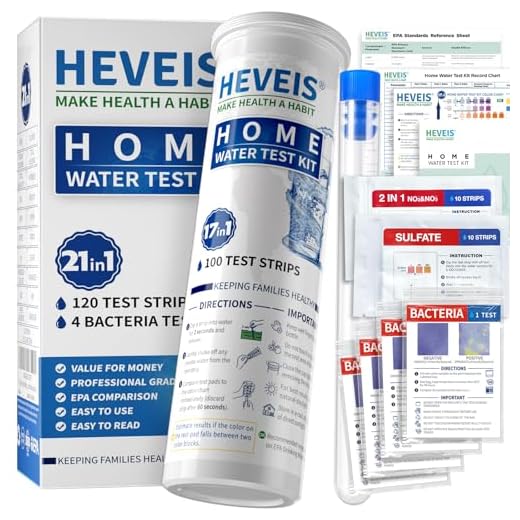Spring Splash: Why Partial Water Changes Matter This Season
Feeling spring changes in your tank? As daylight and room temps shift, biological and chemical processes speed up—plants grow, algae flares, and fish metabolisms rise. Partial water changes are one of the simplest, most effective tools to keep things balanced: they remove excess nutrients, reset water chemistry, and reduce stress for your fish.
This guide covers what spring does to a freshwater aquarium, clear signs you need a change now, the best time of day to do partial water swaps, flexible scheduling options, safe temperature and acclimation steps, plus a quick checklist and troubleshooting tips. Read on for advice you can adapt to your tank and confidence to tackle spring maintenance.




Water Changes in Your Aquarium: When
How Spring Changes Your Freshwater Tank: Biology and Chemistry Overview
Longer days and warmer room temps
Spring brings longer daylight and a small but meaningful rise in ambient temperature. More light fuels plant photosynthesis (and algae), while a few degrees warmer speed up chemical reactions in the water. Even a change of 1–3°C can make your tank “busier” — everything happens faster.
Boosted fish metabolism and waste production
Warmer water means higher fish activity and appetite. Fish eat more and produce more waste, which raises organic load and the amount of ammonia introduced to the system. If you’ve got young or breeding fish this season, expect spikes in feeding, fry mess, and cleanup needs.
Bacteria and nutrient cycling shift
Beneficial nitrifying bacteria reproduce faster in spring, so nitrite-to-nitrate conversion can accelerate — but bacterial growth lags behind sudden increases in waste. That means short-term ammonia or nitrite spikes are more likely after heavy feeding, new livestock, or temperature swings. At the same time, heterotrophic bacteria that feed on organic material will bloom and consume oxygen.
Oxygen, nitrogen compounds, and pH dynamics
Warmer water holds less dissolved oxygen, so nighttime oxygen dips (when plants respire) are more stressful. Ammonia toxicity is worse at higher temps and higher pH, so watch both. Nitrate tends to climb as biological activity increases, fueling algae. pH can drift faster due to CO2 fluctuations from plant growth and respiration.
Quick springproof actions
These seasonal dynamics explain why rigid, year-round change routines often fail in spring — read on to learn the immediate signs that your tank needs a partial change right now.
Signs Your Tank Needs a Partial Water Change Right Now
A quick reality check: spring can turn a stable tank into a fussy one overnight. Here’s a clear, usable checklist to help you decide whether to act now — with short how-to steps you can use immediately.
Visual and behavioral warning signs
A common real-world moment: after trimming a heavily planted tank in March, many hobbyists see a fast nitrate-driven algae flare — that cloudiness plus a few gasping tetras = time to change water.
Measurable indicators — how to read your test results
Quick action checklist
If signs or numbers match any of the thresholds above, act now — and in the next section we’ll cover the best time of day to do those spring partial changes so fish cope better.
Best Time of Day for Partial Water Changes in Spring
Morning: cool, steady, and low-stress
Pros: cooler room temps before daytime sun, higher dissolved oxygen from overnight photosynthesis, and fish are often more active and feeding soon — so you can spot problems. Cons: if you do changes before heaters kick in, be mindful of slightly cooler replacement water. Practical tip: do morning changes with water pre-warmed a degree or two if your heater hasn’t stabilized.
Midday: convenient but watch for heating
Pros: easiest for people with daytime schedules and for tanks in rooms with stable HVAC. Cons: tanks near sunny windows can heat quickly, making a “matched” water temperature harder to maintain and risking thermal shock. If you control temperature (room AC, insulated blinds, or an Inkbird ITC-308 temperature controller with an Aqueon or Eheim heater), midday is perfectly fine.
Evening: smooth transition into night, with caveats
Pros: late afternoon/early evening changes can prevent an abrupt overnight temperature drop after a cool night, and fish are often winding down so less stress. Cons: doing big changes right before lights-out can disturb nocturnal routines; also watch oxygen levels overnight—consider adding gentle surface agitation.
How to pick for your setup
Quick real-world rule: cooler morning changes to beat heat spikes, late-afternoon for tanks exposed to cool nights, and midday only when temperature control is solid. Next, we’ll talk about how often to schedule these changes during spring.
How Often to Do Partial Water Changes During Spring: Scheduling Options
Quick planning factors
Spring means shifting biology — more plant growth, more fish activity, and potentially faster ammonia/nitrate production. When choosing a schedule, prioritize three things: tank size, stocking level, and whether plants or fish are your focus. Small tanks and heavy stocking need more attention; planted tanks often tolerate smaller, more frequent changes.
Three practical plans
How to pick percentages
Use test results and observation, not just the calendar:
Transitioning as outdoor temps stabilize
Start spring conservatively—more frequent, smaller changes—then reduce frequency or volume as room temperatures and test results stabilize. If nights stop dropping and nitrate/ammonia read steady for two weeks, move one step gentler (e.g., from 20% biweekly to 10% weekly).
Simple decision flow
Test → Observe (behavior, algae, plant growth) → Choose percentage/frequency → Reassess after two weeks.
Next up: practical steps to match temperatures and chemicals during the change so your fish and plants stay calm and healthy.
Temperature, Acclimation, and Chemical Balance: Doing Changes Safely
Match temperatures first
Always match the new water’s temperature to the tank before adding it. Fill your change bucket, measure with a digital thermometer (Apera or Inkbird style), and adjust with a heater like the Aqueon Pro inline/immersion heater for small buckets. If tap water is warmer because pipes warmed in the sun, mix with cooler tap or let the bucket sit in shade until it reaches tank temp — never add ice directly.
Match pH and hardness
Check pH and GH/KH quickly before mixing. If your tap is much different, use either:
Conditioners and safe additives
Always treat tap water with a trusted conditioner: Seachem Prime neutralizes chlorine/chloramine and detoxifies ammonia; API Tap Water Conditioner removes chlorine. For sensitive or breeding tanks, add a stress coat or electrolyte mix as recommended by the product label.
Gradual exchange and acclimating sensitive species
For routine 10–25% changes, pour slowly along the tank edge or use a gentle siphon return. For larger changes or delicate species (discus, some cichlids), do a drip acclimation: place new water in a bucket and drip tank water into it with airline tubing until volumes equalize (15–60 minutes depending on size).
Protect beneficial bacteria
Never clean all filter media at once. Rinse sponges or bio-media in old tank water in a bucket to preserve bacteria. Avoid replacing media and doing a big water change the same day.
These practical steps keep spring changes safe and calm — next, we’ll walk through a quick checklist and common troubleshooting tricks you can use on the first warm day of spring.
Quick Spring Partial-Change Checklist and Troubleshooting
Step-by-step checklist (do this every spring partial change)
Troubleshooting common spring problems (fast fixes)
Preventive small habits that reduce emergencies
Next we’ll wrap up with how to make these spring changes part of a calm, seasonal routine.
Wrap-Up: Make Spring Water Changes Work for Your Tank
Spring partial water changes are less about rigid rules and more about paying attention — test water, watch behavior, and pick timing that keeps your fish calm. Use the schedules here as a starting point, adjust based on your tank size, stocking level, and heater setup, and always acclimate replacement water to match temperature and chemistry.
Keep a simple log of dates, volumes, and test results so you can spot trends. Small, regular changes often beat sporadic big ones. Enjoy the clearer water and livelier plants that come with consistent care, and share your successes or questions with fellow hobbyists. Happy spring maintenance — small steps make a big difference every season.










Good summary — I liked the scheduling options. Quick note: if your tank is heavily stocked, the schedule in the article might be too light.
I use the Tetra Gravel Siphon for my 40-gallon and a Varify 17-in-1 kit for quick checks. The Varify is handy but I still validate with an API kit now and then.
Varify saved me during my move — quick and portable. Agree on validating every few months with the API kit.
Thanks — we did mention tailoring schedule to stocking levels, but we’ll add a clearer table for light/moderate/heavy stocking.
Question: I run a heavily stocked community tank (60 gals) with semi-aggressive cichlids. The article suggests 20–30% weekly, but I’m worried that’s not enough. Should I do 40% biweekly? Also, what products from the list are best for my setup?
If you’re ever unsure, track parameters daily for a week with the 11-in-1 strips to spot trends, then adjust frequency.
Also consider adding a small internal power filter or increasing filtration temporarily to help keep bioload in check between changes.
I run something similar — I do 30% twice a week during spring spikes. It’s more work but stabilizes nitrates and reduces aggression tied to poor water quality.
If you go larger changes, watch for parameter swings. Slow addition and temp match are crucial. Gravel vacuum frequently to remove waste.
For a heavily stocked 60-gal, 30–40% weekly or 40% biweekly can be appropriate—pick what you can maintain consistently. Use the API Freshwater Master kit for monitoring, API Tap Water Conditioner for dechlorination, and the Enomol or Tetra siphon depending on substrate complexity.
Loved the troubleshooting section — saved my Corys last spring (no joke). Quick confession: I once forgot to dechlorinate bc my brain was half-asleep 😅.
I now keep API Tap Water Conditioner right next to the bucket and use the 11-in-1 strips for a quick check before adding water. The article’s checklist is my go-to now — thank you!
Happy to hear the checklist helped! Keeping essentials by the bucket is a simple habit that prevents a lot of drama 😂.
Same — sticky notes are lifesavers. Also, invest in a small digital thermometer so you don’t have to eyeball temp.
We’ve all been there. I keep a sticky note on the bucket: “CONDITIONER?” saved me once.
Short and sweet: this helped me finally schedule things properly. Bought the Enomol and it’s a game-changer. Also the 21-in-1 kit is surprisingly good for home checks. 👍
Enomol makes big tank maintenance feel less like a workout, lol.
Glad it was useful! Enomol and 21-in-1 are great starter combos for many hobbyists.
Solid advice in the article on acclimation and chemical balance. A few additional pointers from my experience:
1) For temp: match new water within 1–2°F using a thermometer in the bucket. Drip acclimation if you have sensitive fish.
2) For chemistry: dose API Tap Water Conditioner and then test for chlorine/chloramine with the 21-in-1 Home kit if you suspect weird municipal changes.
3) Tools: Enomol for big gravel jobs, Tetra for small tanks. Both have their place.
Also: temp swings are the sneakiest killer in spring — monitor morning vs evening room temps.
Agree on temp swings — I use a small aquarium heater in spring to avoid sudden drops during night.
Excellent, practical steps — especially the tip about checking municipal changes with a home kit. We’ll add a note about local water variability.
I like to pre-mix and condition my bucket, then float the bucket to equalize temp for 10–15 minutes before adding water.
Good call on the 21-in-1 kit for municipal surprises — saved me when the city did pipe work and my tap chem changed for a week.
Great read — loved the practical checklist! I switched to doing partials early spring last year and it made a noticeable difference.
I use the API Freshwater Master 800-Test kit before changes and the Enomol gravel vacuum for fast water swaps. Saved me so much time and stress.
Only thing: I wish the article had a bit more on how to adjust change size for planted vs. non-planted tanks.
Thanks Maya — glad it helped! Good idea on adding a planted vs. non-planted table; we’ll consider updating the checklist with specific % ranges for each setup.
Totally — planted tanks often tolerate fewer and smaller changes. I do 20% weekly for mine, and use API Tap Water Conditioner when topping off.
Enomol is such a lifesaver for big tanks. Quick FYI: if you have delicate plants, siphon gently so you don’t uproot them.
Nice breakdown of timing and chemistry. Quick question: are the 11-in-1 test strips accurate enough for daily checks, or should I invest in the API 800-test kit? Cost is a factor for me.
I use strips daily and the API kit once a month. The kit catches issues strips miss (especially low-level ammonia).
If cost is a concern, strips are fine for daily trend-spotting (ammonia/nitrate/pH). But get an API Master kit for monthly verification and any time results are unexpected.
Spring algae says hi. 😒 Article definitely nails the frequency bit.
I promise I love my tank but algae multiplies like it’s got a side hustle. Tried cutting light hours and bumping partials — algae still fights back. Anyone have a miracle cure besides a scrub and sacrifice?
Algae can be stubborn. Try checking nitrate/phosphate levels (11-in-1 strips or API kit) and reduce excess nutrients. Introducing algae grazers or short algae-targeted blackout can help.
I had good results after switching to the Enomol vacuum and increasing water changes to 30% twice a week for a month; cleaned the substrate nutrient buildup.
No miracle but hydrogen peroxide spot treatments (careful!) and adding fast-growing plants helped me outlast the bloom.
Morning person here — I do partials right after my morning coffee. 😂
The article’s section on best time of day made sense, but honestly I think consistency > exact hour. That said, anyone else have luck doing changes in the evening to avoid midday temp swings?
Evening works for me because my tap is cooler during the day (weird house plumbing) so I let the bucket sit out 2 hours before using it.
You’re right — consistency is key. Morning or evening both work if you keep water temp and parameters consistent. Evening can be good if your room temp stabilizes overnight.
I used to do them midday and killed a batch of fry once — temp shock was real. Now I do early morning and acclimate water slowly.
If you’re using a conditioner like API Tap Water Conditioner, it helps but doesn’t replace temp acclimation. Good point about consistency.
Really informative and practical. A couple things from my experience:
– Spring spikes nitrates for me every year, so I bump to 30% changes for a few weeks.
– I rely on the 11-in-1 strips for quick checks but confirm with the API Freshwater Master kit monthly (strips are fast but less precise).
– Don’t forget to dechlorinate with API Tap Water Conditioner and add water slowly to avoid shocking fish.
Hope that helps someone — took me forever to figure this routine out.
PS: small typo in the troubleshooting table (row about KH), otherwise solid article.
Thanks for the tips and the typo catch — we’ll correct the KH row. Love that you cross-check strips with the API kit — that’s great practice.
Same here on nitrates. I combine 30% partials with occasional gravel siphoning using the Tetra siphon. Works well.
Also recommend measuring temperature of new water and matching within 1-2°C before adding for delicate tanks.
+1 on adding slowly — I use a pump to drip new water in over 10-15 minutes for sensitive species.
Fwiw: some 11-in-1 strips are mediocre — check expiry dates. The API Master kit calibration is worth it.